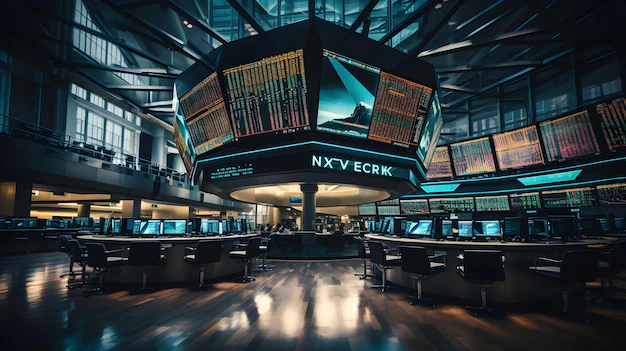In a world increasingly attuned to the urgency of environmental sustainability, trade shows have become crucial platforms for showcasing eco-conscious insights and innovations.
According to Sustainable Review, Sustainable Live London, SDG Summit, and Climate Week NYC are some of the biggest sustainability conferences and exhibitions. These exhibitions not only provide a glimpse into the future of sustainable practices but also serve as catalysts for change within industries.
As we navigate the challenges of climate change, emerging trends in trade shows shed light on groundbreaking initiatives that prioritize the planet.
In this article, we will explore the evolving landscape of eco-consciousness within the world of trade shows.
Sustainable Materials Redefining Exhibits
Trade shows are witnessing a transformative shift in booth aesthetics as sustainable materials redefine the exhibitor landscape. Gone are the days of disposable plastic and wasteful displays.
Exhibitors are increasingly turning to eco-friendly alternatives like recycled cardboard, bamboo, and even mushroom-based materials to construct visually striking and environmentally responsible booths. As noted by Bis Research, mycelium-based materials have the potential to significantly contribute to the green economy and environment. They save energy and offer insulation.
These materials not only reduce the overall carbon footprint of the event but also serve as powerful statements on the viability of sustainable design.
From modular structures to biodegradable banners, the creative use of sustainable materials is fostering a new era of conscious exhibition design. This inspires both exhibitors and attendees to consider the ecological impact of every element in their displays.
Energy-Efficient Booth Designs
Innovative booth designs are taking center stage at trade shows, with a spotlight on energy efficiency. According to Exhibits Northwest, exhibitors are incorporating cutting-edge technologies such as solar panels and energy-efficient LED lighting to power their displays. As noted by the Department of Energy, LEDs consume up to 90% less energy than standard lights while lasting up to 25 times longer.
This move toward sustainable energy not only minimizes the environmental impact of events but also sets a precedent for practical, eco-friendly solutions. These energy-efficient designs serve as a visual spectacle while demonstrating the feasibility and benefits of incorporating green technologies into everyday business practices.
As attendees experience the visual impact of renewable energy solutions firsthand, the ripple effect is a heightened awareness of the potential for sustainable practices.
Sustainable Innovation With Local Trade Shows

Across the United States, locals are leading the charge in embracing sustainable innovation. Cities and states are increasingly recognizing the importance of environmental responsibility, with communities actively engaging in eco-conscious practices. From the adoption of renewable energy sources to the implementation of green building standards, the commitment to sustainability is evident.
Certain cities and states have become pioneers in this movement, setting ambitious goals and implementing comprehensive plans to reduce their ecological footprint. From California’s stringent emissions standards to New York’s initiatives promoting green infrastructure, these regions are at the forefront of the sustainability revolution.
To further champion eco-conscious practices, trade shows focused on sustainability have become a hallmark across the United States. These events serve as platforms for sharing knowledge, showcasing innovations, and fostering a nationwide dialogue on the collective journey toward a more sustainable future.
Nestled in the heart of the Pacific Northwest, Portland stands as a beacon of sustainable living and innovative environmental practices. Portland’s residents have long embraced a lifestyle that prioritizes nature, sustainability, and community engagement. This extends to businesses and public institutions, making the city an ideal host for events dedicated to environmental responsibility.
Known for its commitment to eco-conscious urban planning, Portland has earned its reputation as one of the greenest cities in the United States. According to Green City Times, Portland has created almost 92,000 acres of green space. This includes a network of pathways and parks excellent for walking and riding.
Against this backdrop of eco-awareness and forward-thinking, the Oregon Convention Center (OCC) has emerged as a cornerstone of sustainability within the city.
The OCC embodies the city’s values through its commitment to green building and sustainable business practices. It frequently holds trade shows with numerous eco-friendly Portland trade show displays. As we explore the OCC’s dedication to sustainability, it’s essential to recognize how it integrates into the broader landscape of Portland’s eco-friendly initiatives.
Virtual Experiences for Reduced Carbon Footprint
In response to the global call for reduced carbon emissions, trade shows are embracing virtual and hybrid experiences. This evolution allows for broader participation while significantly decreasing the carbon footprint associated with travel and logistics.
Virtual components include interactive online exhibits and virtual networking spaces. This enhances accessibility while underscoring the importance of adopting eco-friendly alternatives in the face of climate challenges.
As industries set sail toward more sustainable event formats, the positive environmental impact becomes evident. The shift toward virtual and hybrid experiences represents a dynamic step forward, proving that connectivity and eco-consciousness can go hand in hand.
Circular Economy Initiatives in Product Showcases
Trade shows are becoming key battlegrounds for the promotion of circular economy principles, particularly evident in product showcases. Exhibitors are spotlighting products designed for longevity, repairability, and recyclability, challenging traditional linear production models.
From electronic gadgets with easily replaceable components to fashion items made from recycled materials, the emphasis is on creating a closed-loop system. This shift not only aligns with consumer preferences for sustainable products but also compels industries to reevaluate their approach to production.
With circular economy principles, trade shows are driving home the message that sustainable consumption is not just a preference but a necessity.
Eco-Friendly Packaging Solutions
The spotlight on sustainability extends to the very packaging that houses products exhibited at trade shows. Exhibitors are increasingly adopting eco-friendly packaging solutions that prioritize biodegradability, recyclability, and minimal environmental impact.
From compostable wrapping to innovative designs that reduce excess packaging, the emphasis is on minimizing waste throughout the supply chain.
This commitment not only resonates with environmentally conscious consumers but also prompts industries to rethink their packaging practices. The ripple effect is a broader shift toward a more sustainable and mindful approach to how products are presented and consumed.
Collaborative Sustainability Initiatives Among Exhibitors
The ethos of sustainability is thriving in trade show spaces, where exhibitors are forging collaborative initiatives to champion environmental responsibility. Shared efforts include waste reduction programs, carbon offset partnerships, and the establishment of industry-wide sustainability standards.
This collaborative spirit not only amplifies the impact of individual exhibitors but also fosters a culture of environmental responsibility across diverse sectors. Exhibitors are pooling resources, sharing best practices, and collectively working toward a common goal of reducing the ecological footprint of trade shows.
As this collaborative momentum grows, trade shows are no longer just platforms for individual businesses. They have become hubs for collective action toward a more sustainable and resilient future.
In conclusion, trade shows are driving transformative change through eco-conscious trends. From innovative booth designs with energy-efficient technologies to virtual experiences reducing carbon footprints, the industry is evolving. Local initiatives, like Portland’s commitment to sustainability and collaborative efforts among exhibitors, highlight a collective dedication to environmental responsibility.
Trade exhibitions have evolved into more than just a platform for businesses. They have also become focal points for collaborative efforts toward a more sustainable future. As the industry continues to prioritize greener practices, it contributes significantly to a broader global movement for sustainable business models and conscious consumer engagement.
Read Also:






















